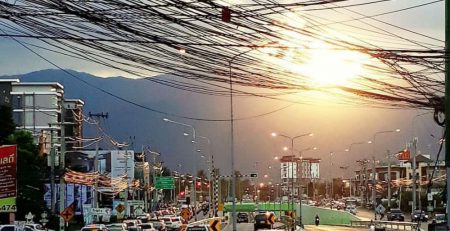Rising Costs Plague India’s Tata Teleservices As Competition Intensifies
Tata Group is looking for a clean break
Tata Teleservices (TTSL) has family ties to one of India’s biggest industry groups, but that hasn’t helped it escape the “Jio effect” in recent years. With just 8.7 million subscribers and a (unified service) license covering only Mumbai and (rest of) Maharashtra & Goa, TTSL has struggled against larger nationwide competitors. Tata Group’s new chairman is now reported to be looking to sever ties with TTSL.
This comes a few months after NTT DoCoMo sold its stake in TTSL back to Tata Sons, consolidating Tata’s ownership in TTSL.
The Jio effect
Reliance Jio has used its nationwide unified license and deep pockets to blanket the country with its new network, and has been pricing and bundling very aggressively. Jio’s push has affected all major operators, but small ones like TTSL have had it especially hard.
TTSL’s license has always limited its growth ceiling. As India’s telecom sector has exploded in recent years, though, TTSL has actually shrunk. Its peak was in March 2011, when it reported 16.9 million subscribers. It now has just over half that subscriber base.
Despite the mobile decline, TTSL’s fixed division has grown recently. While TTSL doesn’t break out details, it does report that wireline grew from 30% of revenues in FY2014-15 to 36% in FY2016-17. Total company revenues have grown a bit (20%) since FY2011, despite TTSL’s mobile user decline and India’s declining mobile ARPUs . TTSL’s wireline business has expanded.
Cost curve has been going in the wrong direction
TTSL’s EBITDA margin (EBITDA divided by revenues) has hovered in the comfortable but not stellar range of 20-30% for each of the last 8 fiscal years (it was slightly higher before that). Despite this operating stability, its net margins (net profit divided by revenues) have been negative for 6 straight years, coming in at -85% in FY2016-17. These steady losses have resulted in high debt, among other challenges.
Finance-related costs main culprit, but network & regulatory also key
While most of the telecom industry faces declining costs, on a per line or per subscriber basis, TTSL’s recent experience has differed. Focusing just on three fiscal year periods (FY2010-11, FY2013-14, and FY2016-17), the figure below shows TTSL’s costs on a per subscriber basis, in Rupees per year.

Five categories are shown. Three are operating (network operations, regulatory-related opex, and the cost of renting infrastructure under sharing agreements), while two are non-operating (net financing costs, i.e. the cost of servicing its debt, and depreciation & amortization, or “D&A”).
In each area, TTSL has faced challenges in recent years.
TTSL’s increase in finance costs have been staggering, and D&A costs have also grown. What’s not shown are results through June 2017 (i.e. 2Q17), when TTSL’s finance costs worsened, to 69% of revenues (from 24% in 2Q16)
Regulatory costs per line doubled from FY11 to FY17. These costs vary by country and the operator’s business model. License fees and spectrum charges are in general high in India. So, the fact that TTSL’s regulatory costs – while they are high – isn’t an immediate red flag. But it hasn’t helped the company.
Infrastructure sharing operating expense (opex) has also risen as TTSL has relied more on other providers for network coverage. One goal of this sharing is to lower capex requirements in the short-term, and eventually also debt. Given TTSL’s ongoing high finance costs, that doesn’t appear to have been successful.
Finally, network operations opex trends at TTSL are unusual. Most operators globally have experienced declining network operations costs over time, due to new technology, greater scale, and other factors. TTSL, though, saw network operations opex (per line) more than double between FY2011 and FY2017.
What might explain the network operations trend? One possibility: TTSL started relying far more on other providers for its infrastructure. Infra sharing costs as a percent of total opex grew from 9.3% in FY11 to 19.2% in FY17. Increased sharing could have resulted in some unexpected internal network operations costs; that’s a topic for further research. Another likely factor is the decline of TTSL’s mobile subscriber base, and a relative growth in fixed operations. Mobile subscribers often carry lower ARPUs, but the cost of supporting them in the network is also lower. That’s not the case for every company, clearly, but TTSL’s recent experience supports this view.











